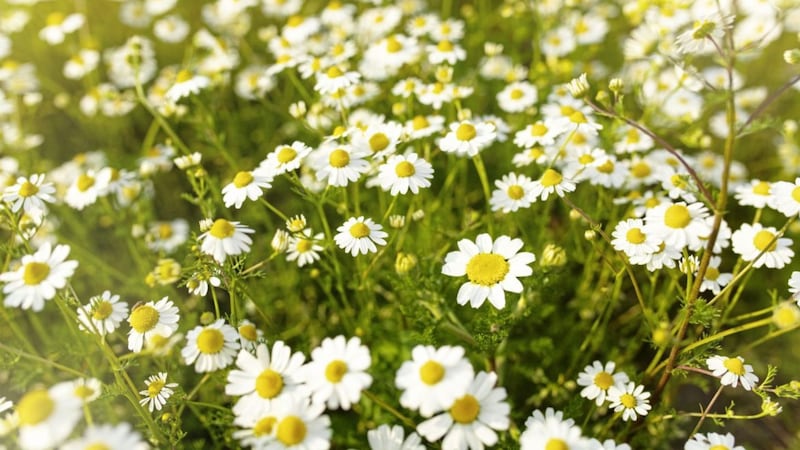BOTH blue and great tit families nesting in my garden, successfully fledged last week, making those perilous first flights into a new world of nearby trees and shrubs which they will explore for a few weeks, following their parents for food while developing their own foraging skills.
Exposed and vulnerable, away from the security and safety of their enclosed homes they must also now avoid the threat of prowling cats or a predatory hooked beak.
At this time of great danger, I wished the young birds a fair wind. This period of merging seasons also offers us screaming swifts and dancing swallows, here to join our resident birds, while secret margins and roadside verges spared the blade, show-off their frothy clusters of cow parsley, golden buttercup, and blue tones of speedwell.
Another flower widespread throughout these months is the humble common daisy, persistently brightening up our lawns with its yellow face of individual 'disc florets' surrounded by white 'ray florets' or petals, carried on a single stem with spoon-shaped leaves at its base. Like many, I'm guilty of not fully appreciating the flower's resilience and environmental value.
Common on lawns and verges, Bellis perennis, a vital source of nectar for bees and other insects, defiantly reappears despite continuous mowing and strimming of green pastures.
Across the world there is the familiar custom of children making 'daisy chains' or as they're known in Ireland, 'slabhra sí', fairy chains, where a slit is made in the stem of one daisy and another inserted into the slit, a process repeated until a chain is made.
Also universally known is the children's game of, '(S)He loves me, (s)he loves me not', the lines said as each petal is picked off until none remain, and the outcome of a love interest is determined.
A Scottish name for daisy, 'bairnwort', meaning child's flower, reflects this association with children and their amusing games.
The name daisy has its origins in the Old English word, 'dægeseage', meaning 'day's eye' because the flower closes at night and then opens in the morning for the day ahead.
Chaucer called it "the eye of the day" in The Legend of the Good Women where he also said the sight of a daisy "softeneth all my sorrow".
The flower was very much used for medicinal purposes with English physician Caleb Threlkeld noting in his catalogue of Irish plants (Synopsis Stirpium Hibernicarum, 1726) "it helpeth Bones to knit again", while other uses in Irish folk medicine including treatment for coughs, colds, headaches, and stomach complaints are mentioned by Uí Chonchubhair (Flóra Chorca Dhuibhne, 1995).
The daisy also acquired the name 'bruisewort' as it was used as a common treatment for bruises and swellings. Many sources claim the Romans used juice from crushed daises to treat wounds during war time, bringing sacks full of the flower with them to the battle fields.
It was believed applying the extract helped close over spear wounds and stem the blood loss.
The common daisy and relatives such as the oxeye daisy and chamomile symbolise new beginnings, rebirth, and renewed hope, the latter plant well known for releasing an apple like fragrance when crushed and its use in herbal teas.
Wordsworth articulates his liking for the daisy and its comforting effects in To the Daisy, writing,
'Fresh smitten by the morning ray,
When thou art up, alert and gay,
Then, cheerful Flower! my spirits play
With kindred gladness:
And when, at dusk, by dews oppressed
Thou sink'st, the image of thy rest
Hath often eased my pensive breast
Of careful sadness.'
Time to fully cherish the common daisy.








